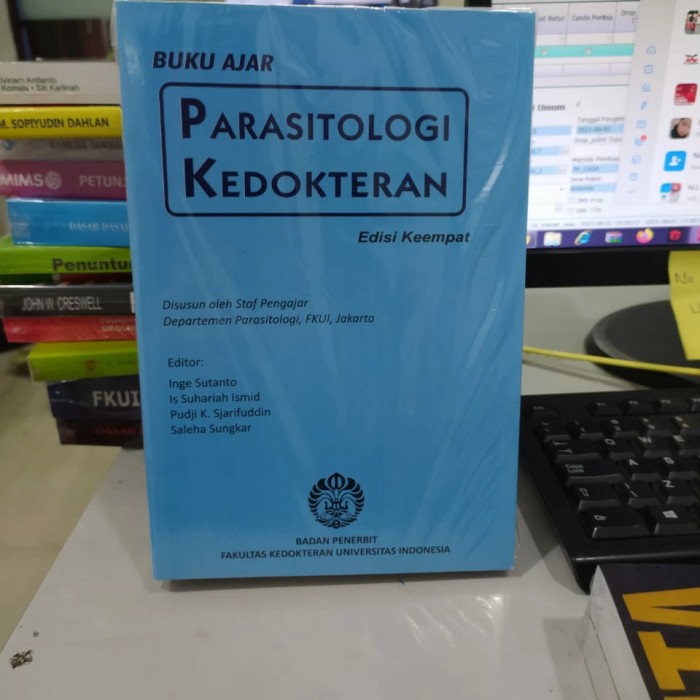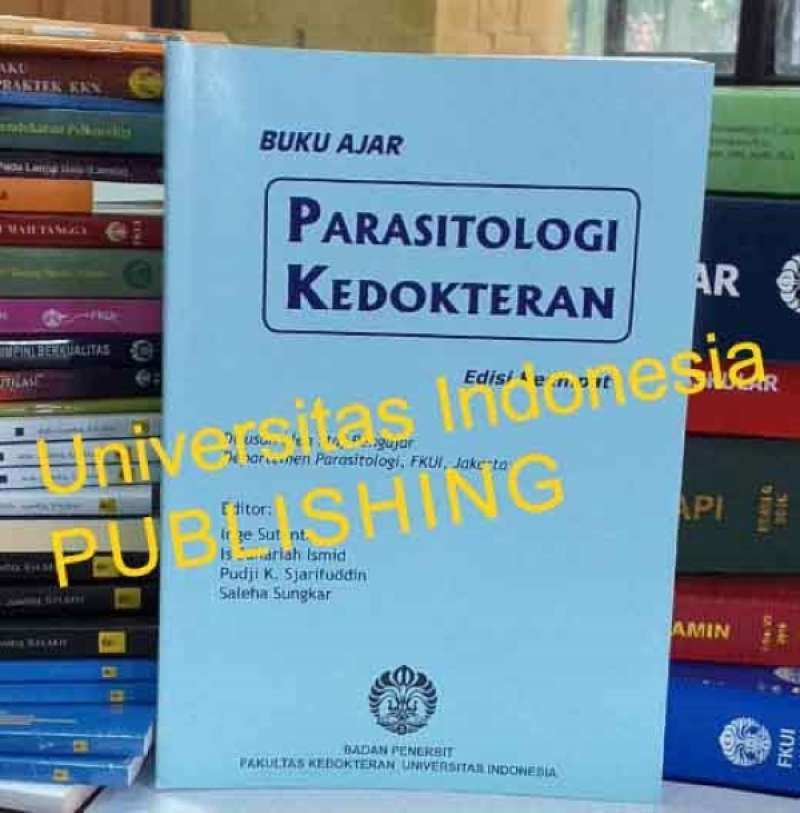

Acta Trop 87: 5360World Health Organization (WHO), 2009. Taenia solium Taeniosis/Cysticercosis in Asian: Epidemiology, Impact and Issues. Seroprevalence to The Antigens of Taenia solium Cysticercosis among Residents of Three Villages in Burkina Faso: A Cross-Sectional Study. Emerging Infectious Disease 13 (9):1413-1416.Carabin, H., Millogo, A., Praet, N., Hounton, S., Tarnagda, Z., Ganaba, R., et al., 2009. Sympatric Occurrence of Taenia solium, T. J Korean Med Sci 25(9): 1272-1276.Anantaphruti, M.T., Yamasaki, H., Nakao, M., Waikagul, J., Watthanakulpanich,D., Nuamtanong, S., et al., 2007. Seroprevalence of tissue invading parasitic infections diagnosed by ELISA in Korea. Neurocysticercosis : A Major Cause of Neurological Disease Worldwide. Center for Food Security and Public Health (CFSPH), 2005. Impact of Emerging Zoonoses on Human and Animal Health. Hubungan Higiene Sanitasi Dengan Kejadian Penyakit Cacingan Pada Siswa Sekolah Dasar Negeri Rowosari 01 Kecamatan Tembalang Kota Semarang Tahun Ajaran 2006/2007.Tolan,R.W., 2011. Geneva, Switzerland: World Health Organization Prevention and control of schistosomiasis and soil-transmitted helminthiasis. Faktor Risiko Infeksi Cacing Tambang pada Anak Tesis Program Pasca Sarjana Universitas Diponegoro. Tesis: Fakultas Kesehatan Masyarakat Universitas Indonesia.
 Suhartono, 1996, Faktor-faktor yang berhubungan dengan kejadian dan intensitas kecacingan pada murid SD di Kabupaten Karangayar Jawa Tengah. Dalam: Jurnal epidemiologi Indonesia, Vol. Sadjiman, Tony, 1998, Gambaran Epidemiologi Kejadian Kecacingan Pada Siswa Sd Di Kecamatan Ampana Kota Kabupeten Poso Sulawesi Tengah. KELUARGA DENGAN KEJADIAN KECACINGAN ANAK BALITA, 1(June), 94–99. Kurniawati, E., Subakir, H., & Setyawati, T. Kejadian Kecacingan pada Siswa Sekolah Dasar Negeri Kecamatan Rumbai Pesisir Pekanbaru The Helminthiasis on The State Elementary School Student on Kecamatan Rumbai Pesisir Pekanbaru, 3(2), 53–58. Buku Pedoman Pemberantasan Penyakit Cacingan. Pengetahuan orang tua tentang infeksi kecacingan pada anak usia sekolah dasar, 91–98. Keywords: family characteristics, infection parasite. Suggestions for the community that every family should be able to access the toilet so that the dirt does not contaminate the soil and increases the risk of transmission of worm eggs and always wash hands with soap. Result: The results of this study show the family habits who do not defecate in latrines (p = 0.02), and the mother feeding the using a spoon (p = 0.01) as the causes of the worm infection.Ĭonclusion: Family characteristics related to the worm eggs infection in infants is family's habit of not to defecate in the restroom and how mothers feed their babies. Each variable was tested with the statistical test Chi-Square. The data analysis employs univariate and bivariate analysis. 237 study sample size are toddlers (aged 12 months to <60 months). The location of this research was conducted in District Sumbang Banyumas, Central Java Province. Method: This research applies cross-section design. Objective: This study aimed to analyze the influence of family characteristics on the incidence of intestinal worms in children under five in one rural area of Central Java, Indonesia. The parasitic infections are known as worm disease.
Suhartono, 1996, Faktor-faktor yang berhubungan dengan kejadian dan intensitas kecacingan pada murid SD di Kabupaten Karangayar Jawa Tengah. Dalam: Jurnal epidemiologi Indonesia, Vol. Sadjiman, Tony, 1998, Gambaran Epidemiologi Kejadian Kecacingan Pada Siswa Sd Di Kecamatan Ampana Kota Kabupeten Poso Sulawesi Tengah. KELUARGA DENGAN KEJADIAN KECACINGAN ANAK BALITA, 1(June), 94–99. Kurniawati, E., Subakir, H., & Setyawati, T. Kejadian Kecacingan pada Siswa Sekolah Dasar Negeri Kecamatan Rumbai Pesisir Pekanbaru The Helminthiasis on The State Elementary School Student on Kecamatan Rumbai Pesisir Pekanbaru, 3(2), 53–58. Buku Pedoman Pemberantasan Penyakit Cacingan. Pengetahuan orang tua tentang infeksi kecacingan pada anak usia sekolah dasar, 91–98. Keywords: family characteristics, infection parasite. Suggestions for the community that every family should be able to access the toilet so that the dirt does not contaminate the soil and increases the risk of transmission of worm eggs and always wash hands with soap. Result: The results of this study show the family habits who do not defecate in latrines (p = 0.02), and the mother feeding the using a spoon (p = 0.01) as the causes of the worm infection.Ĭonclusion: Family characteristics related to the worm eggs infection in infants is family's habit of not to defecate in the restroom and how mothers feed their babies. Each variable was tested with the statistical test Chi-Square. The data analysis employs univariate and bivariate analysis. 237 study sample size are toddlers (aged 12 months to <60 months). The location of this research was conducted in District Sumbang Banyumas, Central Java Province. Method: This research applies cross-section design. Objective: This study aimed to analyze the influence of family characteristics on the incidence of intestinal worms in children under five in one rural area of Central Java, Indonesia. The parasitic infections are known as worm disease. 
These infections are mostly caused the group of worms transmitted through the soil. Background: Parasitic infectious diseases are still prevalent in society, especially in tropical and subtropical regions, including in Indonesia.







 0 kommentar(er)
0 kommentar(er)
